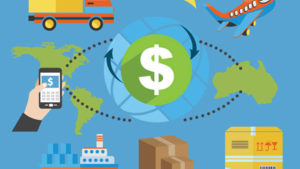Home » Commentary » Opinion » Import tariff abolition a win-win situation
· Newcastle Herald
 With US President Donald Trump’s anti-trade policies dominating the news headlines in 2018, you may have dismissed import tariffs as a distant problem that doesn’t affect you. But you might be surprised to learn the Australian government still slaps tariffs on many of our imports – and it affects each one of us.
With US President Donald Trump’s anti-trade policies dominating the news headlines in 2018, you may have dismissed import tariffs as a distant problem that doesn’t affect you. But you might be surprised to learn the Australian government still slaps tariffs on many of our imports – and it affects each one of us.
Tariffs increase the cost of the goods we buy – including Australian-made products that use imported materials – and add to the amount of tax we pay to fund the expensive bureaucracy that administers our tariff regime.
It’s high time to do away with our needless tariff system; it is nothing more than a relic of our protectionist past, and it generates little revenue while being extremely administratively costly and economically inefficient.
The federal government should therefore adopt a simple, new policy in 2019: the abolition of Australia’s remaining import tariffs. After the failure last year to pass company tax cuts, this policy would resurrect the Coalition’s reform credentials in an election year and improve its standing with Australia’s trading partners — all in one commonsense reform.
Despite years of trade liberalisation, Australia still surprisingly imposes a general 5 per cent tariff on many merchandise imports. Since the 1970s, successive Australian governments of both political persuasions have thrown off most of the shackles of protectionism; reducing maximum tariff rates from upwards of 90 per cent down to 5 per cent today — and Australian households have reaped the benefits.
However, despite the fact that 5 per cent is a low rate, these remaining tariffs are still harmful to the economy. They represent an increase in the cost of inputs for Australian businesses — which are passed on to us all as consumers — inflict huge administrative costs, indirectly reduce worker wages and increase consumer prices. An ANU working paper estimated Australia’s GDP could increase by around 0.4% to 0.6% (or around $7 billion) over time once all remaining tariffs are abolished.
The byzantine tariff regime’s administration costs are ridiculous when weighed against the small amount of tariff revenue collected. These costs are a particularly destructive part of any tax system as they are hidden, fall hardest on small businesses, are difficult to quantify and are nearly always higher than governments claim.
Moreover, the Australian government has succeeded in making the current tariff regime as administratively complex as possible by creating a tariff schedule with more than 6,000 different product categories and over 84,000 lines of tariff schedule.
Even if importing from only one country, businesses may have to wade through multiple tariff schedules and trade preference agreements. For example, imports from Malaysia can enter Australia under three alternative preferential tariff schedules.
And absurdly, due to the bureaucratic hassle, many importers don’t even bother to claim the various tariff concessions available to them. In fact, the Productivity Commission reported that in 2015-16, 29 per cent of imports from countries with a preferential trade agreement did not make use of available tariff concessions. In other words, some importers chose to pay the 5 per cent tariff because it was simply not worth their time or effort to claim a tariff concession — a truly perverse outcome.
Also keep in mind that Australian taxpayers bear a direct cost for this tariff regime. Estimates suggest the Department of Home Affairs processed more than 2,000 tariff classification requests last year — a terrible example of administrative bureaucracy. Even worse, the Department advertises on its webpage that importers can request this formal advice for ‘free’. But there is no such thing as a ‘free’ government service – Australian taxpayers are funding this bureaucratic service, whether they realise it or not.
Finally, there is no fiscal case to keep the remaining tariffs, as they no longer raise significant revenue. Gross tariff revenue in 2017-18 was reported as just $1.9 billion — less than 0.5 per cent of total federal government revenue. Regardless, in the long run, it is also likely that abolishing Australia’s tariff regime would largely pay for itself. A boost to Australian GDP from tariff reform would flow through to higher income tax and GST receipts for the government.
Clearly, the unilateral removal of Australia’s remaining tariffs is well overdue: it would sweep away the last vestiges of our protectionist past and put an end to a complex and costly bureaucratic system. But more importantly, it would generate shared benefits for our local businesses and ordinary Australians – a win-win reform that we can all get behind.
Eugenie Joseph is a Senior Policy Analyst at the Centre for Independent Studies.
Import tariff abolition a win-win situation